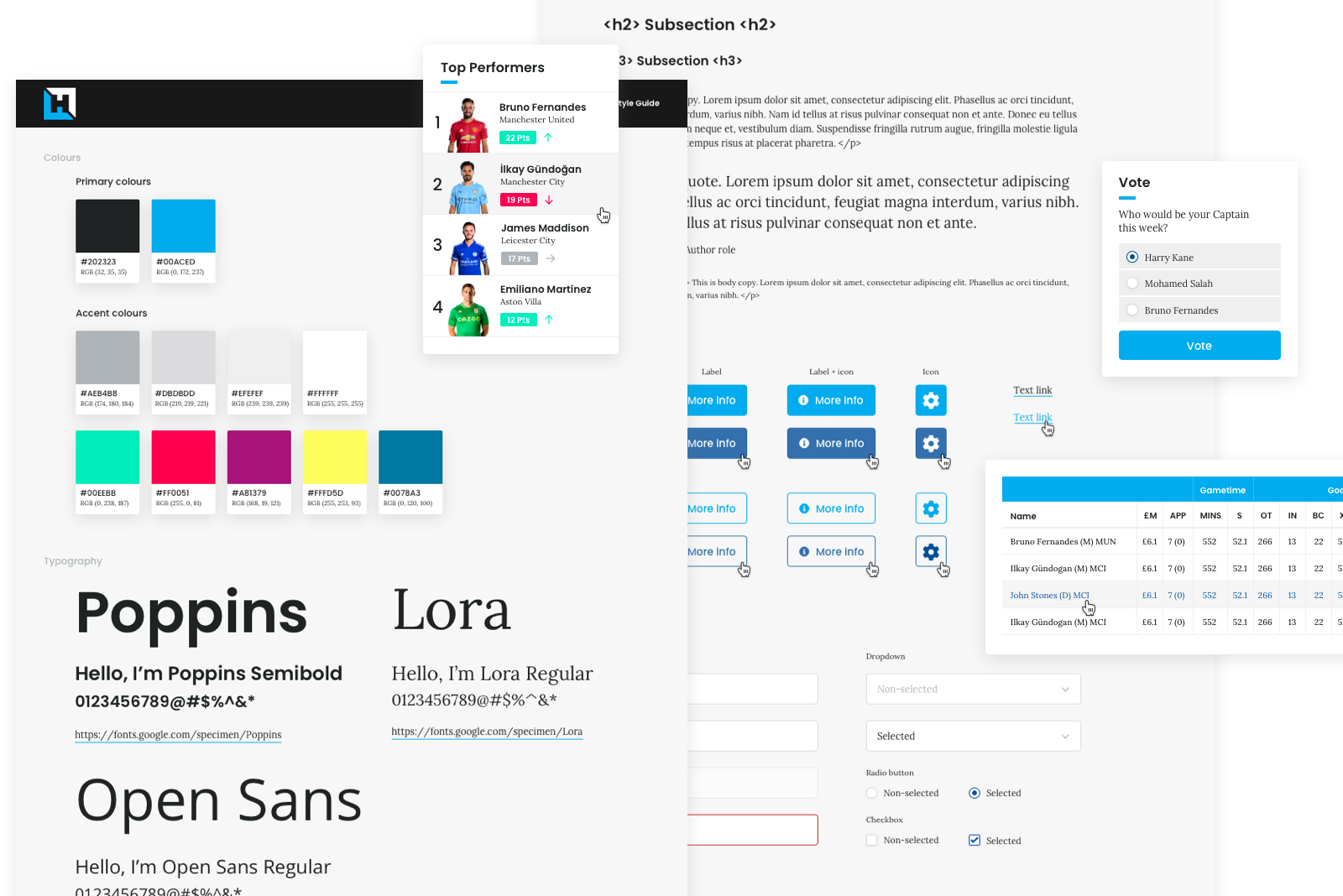A definition of brand guidelines
Brand guidelines document how your brand should be presented to the world. They are used to ensure a consistent look and feel across all forms of communication.
Consistently demonstrating your brand’s identity and values helps to build trust with your customers and increase brand loyalty.
Why are brand guidelines important?
The process of defining your brand strategy and creating a brand identity is incredibly rewarding, but also a lot of work. It’s essential that this investment of your time and money is capitalised upon in the ‘real world’ of your organisation.
Brand guidelines do just that. They take all the elements of your brand identity and distil them into an easy-to-access format. This makes it simple for everyone involved in communicating about your business to be consistently “on brand”.
This consistency ensures that you are creating a clear and memorable identity in the eyes of your customers. It demonstrates your values and builds trust and loyalty with your audience.
Who should use your brand guidelines?
Anyone who is involved in creating marketing or sales materials for your organisation needs to read and understand your brand guidelines.
What form should brand guidelines take?
Brand guidelines can be printed documents, pdf files, videos, posters, presentations…the best format will always depend on who is using them.
For example, a video presentation might be an accessible way for those in your organisation who only need to work with your brand guidelines occasionally, such as your salespeople. A detailed digital version would be better for sharing with external design agencies.
The most important thing is to ensure that your brand guidelines are easily accessible for everyone who needs to use them.
What to include in your brand guidelines
Ideally your brand guidelines should include these elements:
- An overview of your company and its culture, your brand strategy and your values – ie who you are, where you’re going and how you want to get there.
- Brand colours, which will generally include the pantone, RGB, Hex and CMYK codes to ensure an identical look across your marketing collateral. This should include the colours within your logo as well as any complementary colours you use.
- Which fonts to use (which may differ between print and digital), including sizes and if/when to use variations such as italics and bold.
- How your logo should be used. This could include:
- Minimum and maximum sizes.
- Dark and light background versions (if relevant) and any other colour variations allowed.
- Landscape, portrait and square orientation versions and when to use them.
- Spacing (padding) required around the logo.
- Use and positioning of any tagline associated with the logo.
- Specifications for creating design elements, such as icons, infographics, tables, buttons, etc.
- The style of photography and videography to use.
- Tone of voice, or how to speak for your brand. This can include:
- An overview of how language should be used. Should it be formal or informal? Technical or jargon-free? Contemporary or traditional? Aspirational or down to earth?
- A library of specific words and phrases which it’s good to use.
- Grammatical preferences (such as the use of contractions, or the passive vs active voice).
- Punctuation preferences (for example, do your bulleted lists start with capital letters, have full stops, commas?)
- How the tone of voice might differ between communication channels (technical documents might sound very different to social media posts).
- Examples of how to write for your brand, explaining what is good about each one.
In creating your brand guidelines it can be useful to include what is not acceptable, for example changing the aspect ratio of your logo or using slang terms in copywriting.
As well as writing the rules, your brand guidelines should include plenty of illustrations to help guide the reader.
Your brand guidelines may also include templates for commonly used items, such as:
- Business cards
- Headed paper
- Word documents
- Presentations
- Video opening/closing images
- Email signatures
- Advertising
- Social media images
Larger organisations may require separate or adapted guidelines for internal company communications.
Examples of brand guidelines
Extracts from our brand guidelines for Fantasy Football Hub and Albion Languages:


Define your brand guidelines
We are a Sussex branding agency helping ambitious businesses align their brands to the type of customers they want. Creating pragmatic brand strategies, eye catching brand identities and effective brand guidelines.
Get in touch to discover how we could benefit your brand and your bottom line.